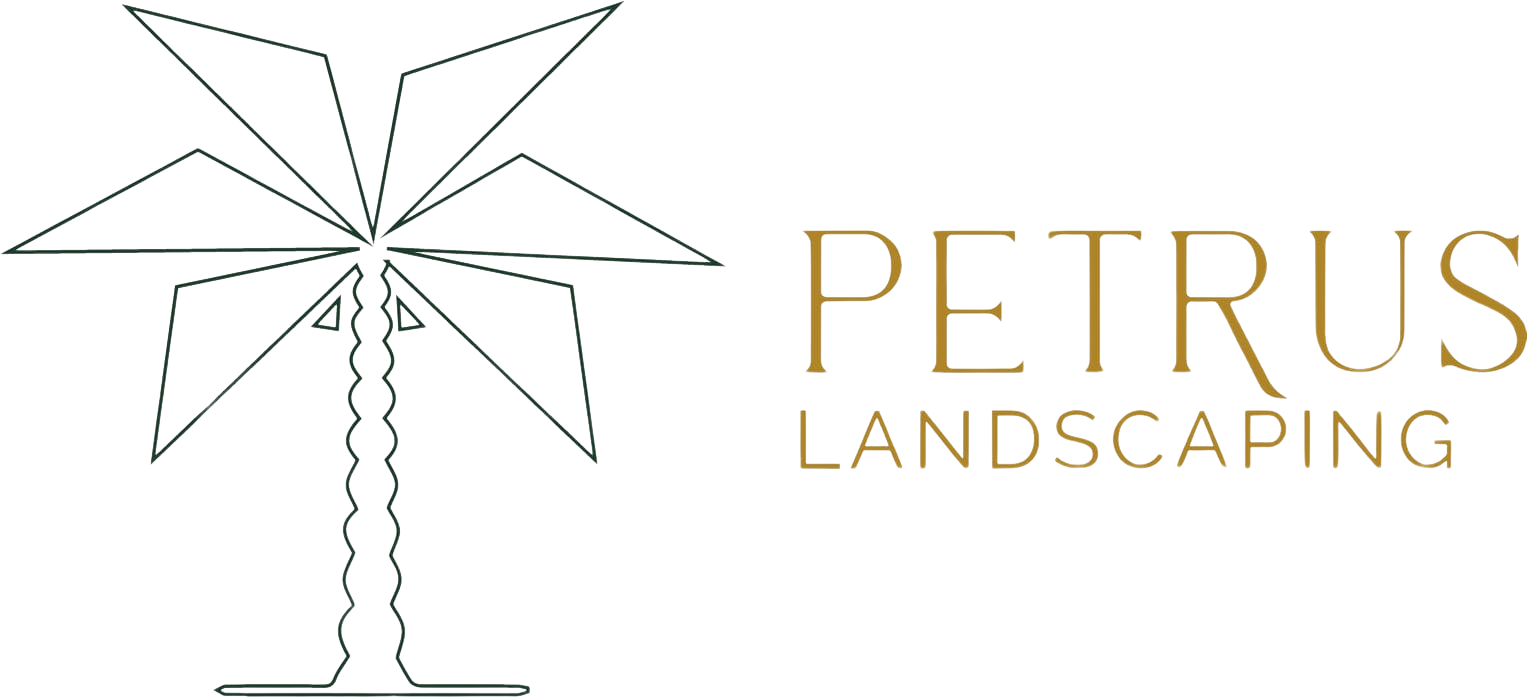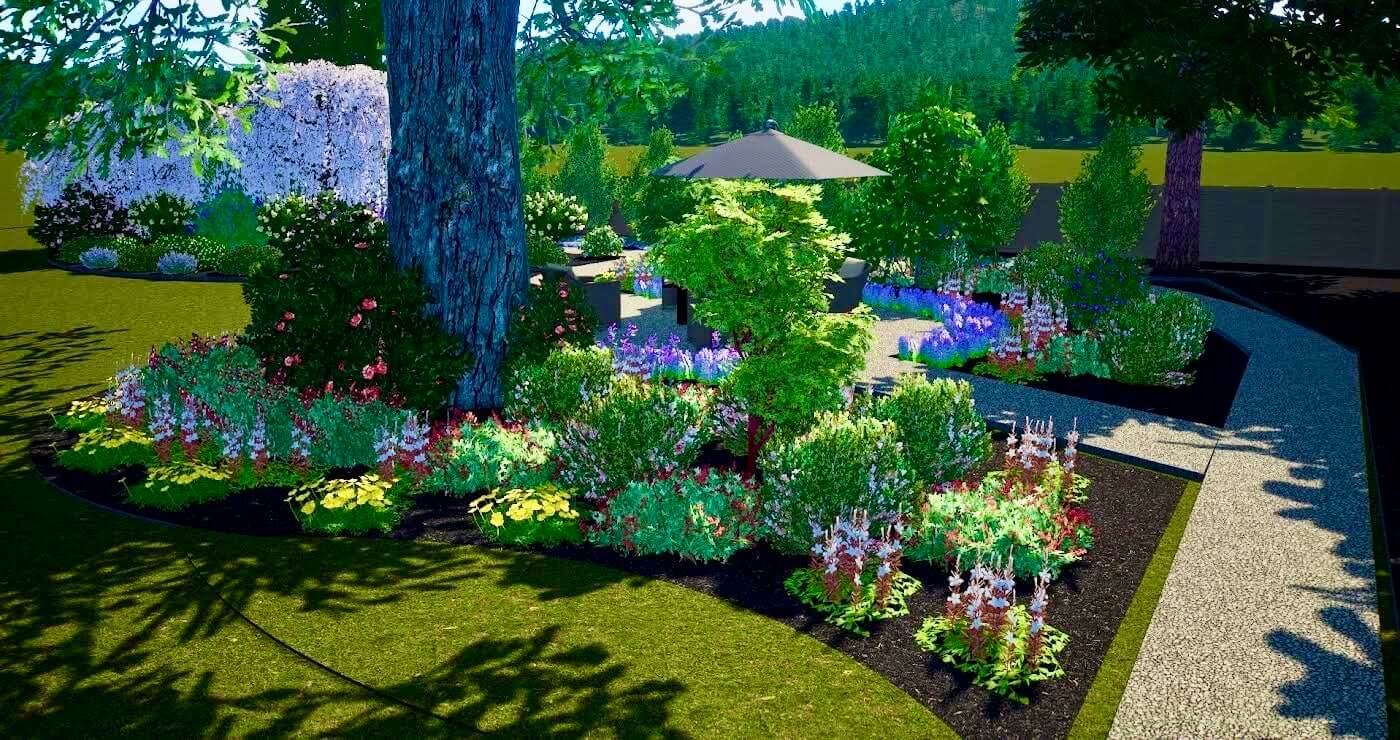In landscape design, the integration of technology has brought forth a revolutionary tool that not only streamlines the creative process but also elevates the client’s understanding of the envisioned outdoor space. Enter 3D visualization, a powerful asset in the hands of landscape designers, shaping the way ideas are conceived, communicated, and ultimately brought to life. In this comprehensive exploration, we delve into the profound impact of 3D visualization in luxury landscape design, unraveling the layers of benefits it offers to both designers and clients alike, with a special focus on the unique context of the Bay Area.
The Essence of 3D Visualization in Landscape Design
At its core, 3D visualization in landscape design is a digital representation of a proposed project that allows stakeholders to visualize the final outcome before a single shovel hits the ground. It serves as a bridge between imagination and reality, offering a tangible preview of the designed space. This process has redefined the communication dynamics between landscape designers and clients, fostering a deeper level of understanding and collaboration.
In the context of luxury landscape design, where intricate details and personalized elements play a pivotal role, 3D visualization becomes an indispensable tool. The ability to see a lifelike representation of the proposed design allows clients to connect emotionally with the project, ensuring that their aspirations align seamlessly with the designer’s vision. This synergy is particularly crucial in the Bay Area, where a discerning clientele seeks not only aesthetic brilliance but also a harmonious blend of functionality and environmental sensitivity.
Navigating the Complexity of Design Elements
Luxury landscaping often involves a myriad of design elements, from intricate hardscapes to meticulously curated plant selections. Communicating these details effectively can be challenging through traditional design methods. 3D visualization, however, transcends these limitations, providing a platform for designers to showcase the intricate details that define a luxury landscape.
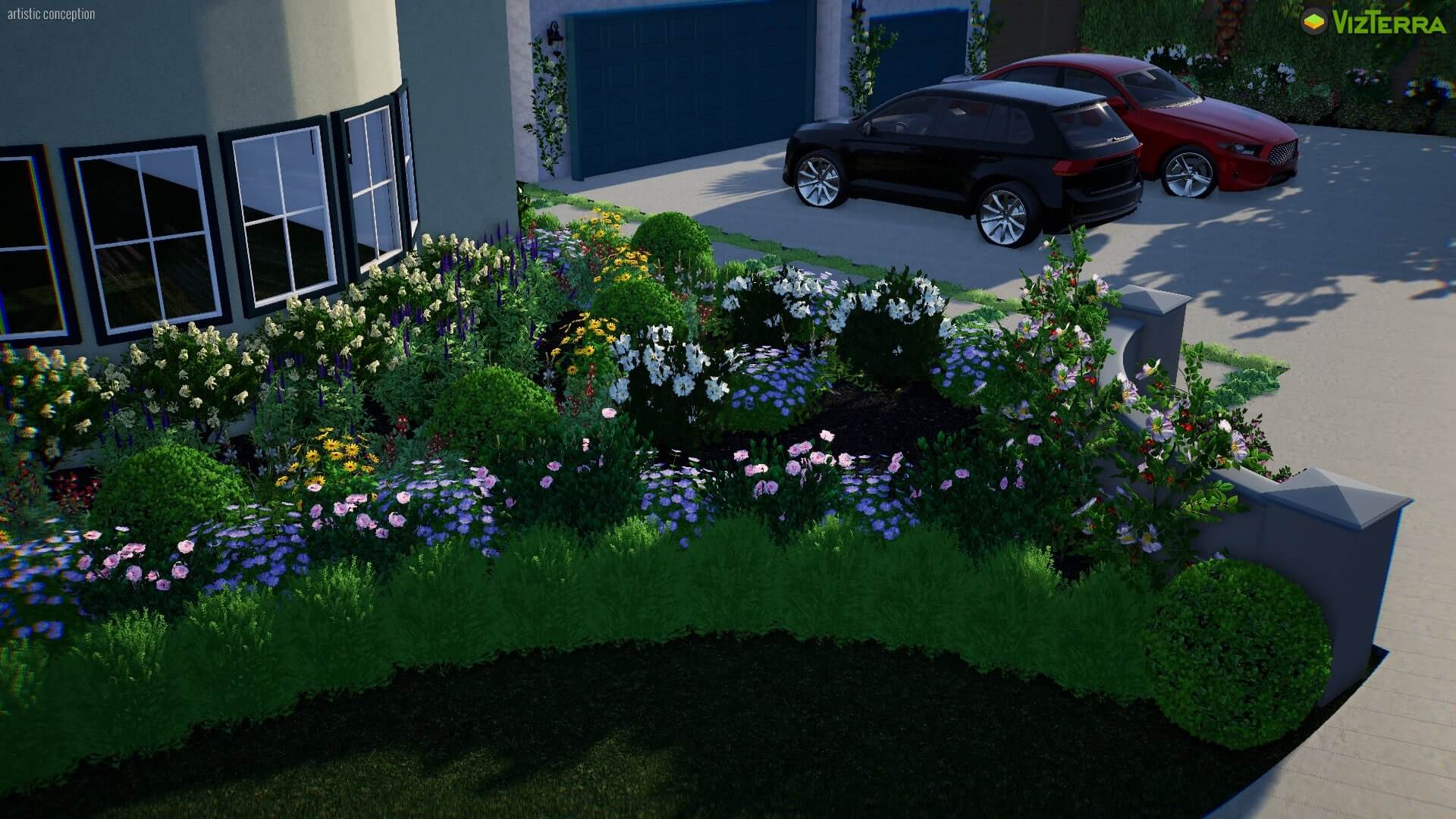
Consider the scenario of integrating a bespoke water feature into the landscape. With 3D visualization, designers can illustrate the play of light on cascading water, the reflections in surrounding surfaces, and the overall ambiance created by this feature. Clients can witness the interplay of every element, from the choice of materials for the fountain to the specific flora surrounding it. This level of detail ensures that the client not only comprehends the design but also appreciates the thoughtfulness and expertise woven into every aspect.
Enhancing Decision-Making Through Realism
One of the remarkable features of 3D visualization is its ability to portray realism. Unlike traditional 2D renderings, 3D models replicate the play of light and shadow, the changing colors throughout the day, and the seasonal transformations of the landscape. This realistic portrayal significantly aids clients in making informed decisions about various design elements.
In the Bay Area, where climatic nuances influence outdoor living experiences, the power of realistic 3D visualization becomes even more apparent. Clients can witness how their outdoor space will evolve with the changing seasons, allowing them to make decisions about the types of flora, outdoor furniture, and even lighting fixtures that will complement the environment year-round. This level of foresight is invaluable in ensuring that the landscape not only meets aesthetic expectations but also aligns with practical considerations.
Streamlining Communication and Collaboration
Effective communication is the cornerstone of successful landscape design projects. Traditionally, conveying the intricacies of a design concept could lead to misunderstandings. 3D visualization, however, transcends language barriers, offering a visual language that is universally understood and appreciated.
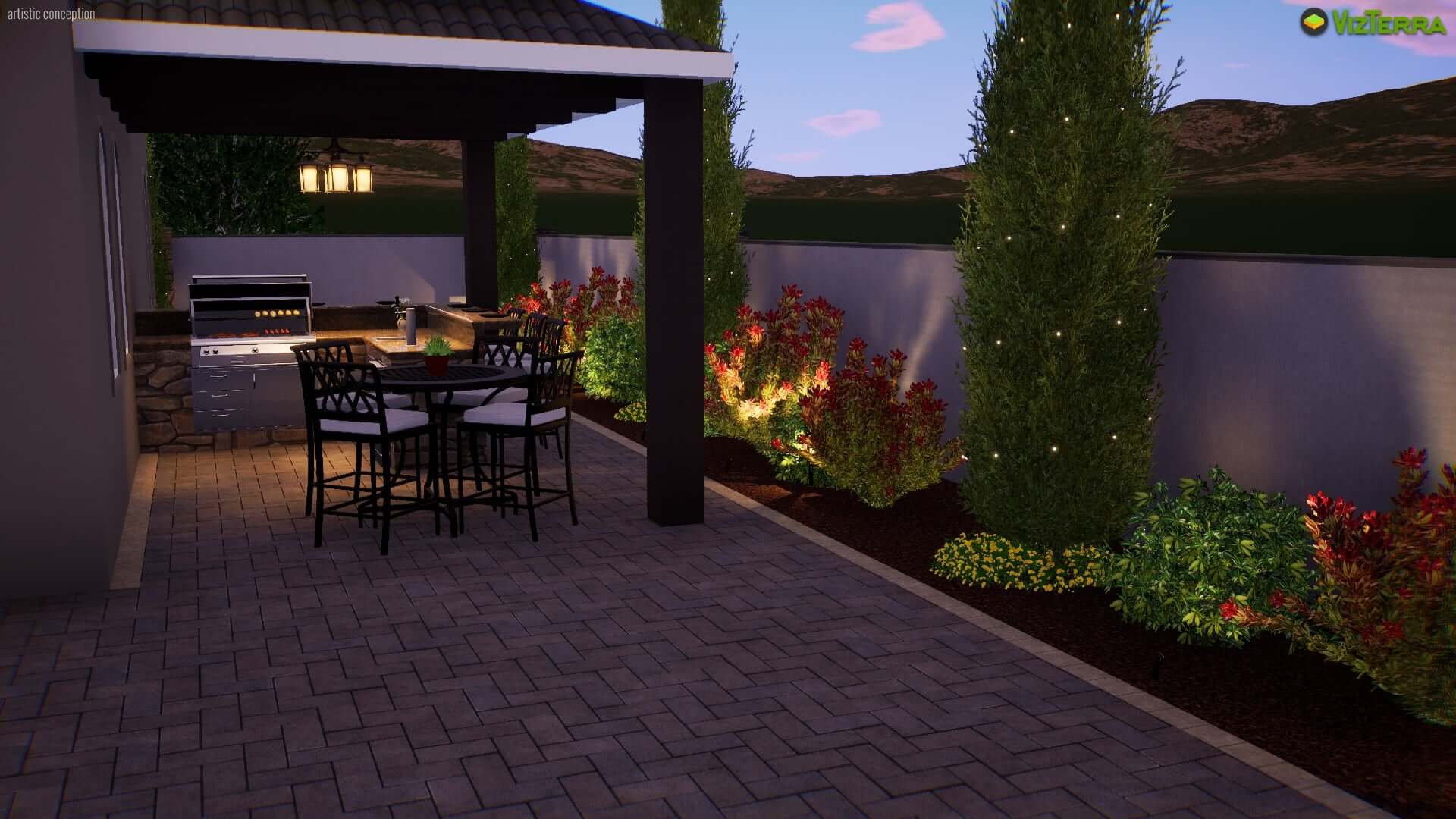
Renowned for its diverse cultural tapestry and a clientele with varied tastes, the clarity provided by 3D visualization becomes a unifying factor. Designers can present concepts in a manner that resonates with clients from different backgrounds, ensuring that the vision for the luxury landscape is shared cohesively. Additionally, the collaborative aspect is heightened as clients can provide specific feedback based on what they see, fostering a partnership where both parties actively contribute to the refinement of the design.
Saving Time and Resources
In landscape design, time is a precious commodity. Traditional design processes often involve multiple iterations and revisions, consuming valuable time and resources. 3D visualization minimizes the need for extensive revisions by offering a clear and comprehensive depiction from the outset.
In the fast-paced environment of the Bay Area, where efficiency is paramount, the time-saving aspect of 3D visualization emerges as a significant advantage. Designers can present a refined vision from the beginning, minimizing the back-and-forth typically associated with traditional design methods. This not only accelerates the design phase but also allows clients to move forward confidently with the implementation of the project.
Addressing Site-Specific Challenges
Every landscape comes with its unique set of challenges, whether it be the topography of the land, existing structures, or environmental considerations. 3D visualization empowers designers to address these challenges proactively, offering solutions that are tailored to the site’s specific conditions.
Characterized by its diverse terrain and microclimates in Bay Area, the ability to address site-specific challenges is paramount. For instance, if a property has a steep slope, 3D visualization allows designers to illustrate how terraced gardens or retaining walls can be seamlessly integrated. It enables clients to visualize the transformation of challenging areas into focal points of beauty, fostering a sense of confidence in the feasibility and aesthetics of the proposed design.
Future-Proofing the Design
The longevity of a landscape design is a key consideration for both designers and clients. The ability to future-proof the design, ensuring its relevance and functionality over time, is an aspect where 3D visualization shines. Clients can envision how their landscape will mature and evolve, making informed decisions about long-term investments.
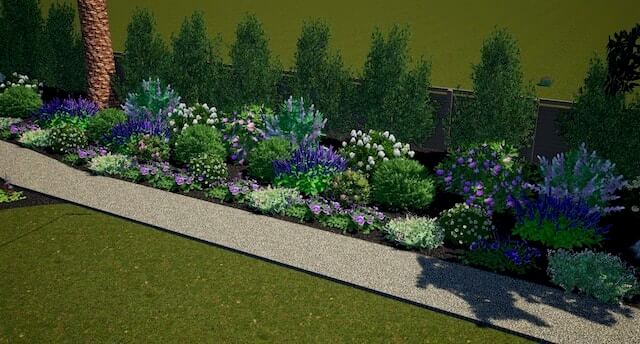
Sustainability and longevity are highly valued, the foresight provided by 3D visualization aligns seamlessly with the ethos of the region. Clients can, for instance, visualize the growth patterns of selected tree species, ensuring that their mature size complements rather than hinders the overall design. This forward-thinking approach contributes to the creation of landscapes that stand the test of time and remain relevant in the ever-evolving environmental consciousness.
The integration of 3D visualization in luxury landscape design emerges not merely as a technological advancement but as a transformative force shaping the very essence of the creative process. From enhancing communication to addressing site-specific challenges and future-proofing the design, the power of 3D visualization is a symphony that resonates throughout every stage of a project. Where a discerning clientele seeks not only aesthetic brilliance but also a harmonious blend of functionality and environmental sensitivity, the utilization of 3D visualization becomes a hallmark of innovative and client-centric design practices. As landscape designer in the Bay Area continue to embrace this powerful tool, the future promises not only visually stunning landscapes but also a seamless fusion of imagination and reality.
